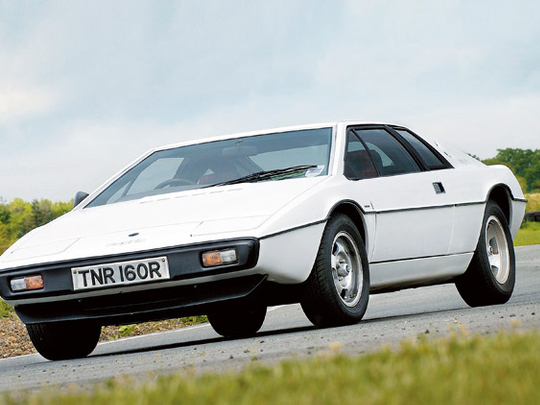
Colin Chapman tried and tried to get Jackie Stewart on his side, but the Scotsman wanted nothing to do with Lotus' fragile Formula 1 cars. Stewart always made sure his seat was in the middle of a sturdy BRM or Tyrell, and no amount of money thrown at him by Chapman could persuade Stewart to move into a flimsy Lotus.
The British racing team's — and Lotus was always predominantly a racing team — road cars echoed Chapman's "to add speed, add lightness" mantra as the minuscule Elan and Elite showed. But in 1972 something changed.
Lotus unveiled a wedge-shaped concept of Italian design, and although this was still an era of slenderness, the car was significantly bulkier and more serious than what was expected of the Hethel manufacturer. Lotus was entering supercar territory. Everyone was watching, because whatever Chapman came up with next was exactly what you needed to copy if you wanted to keep up with his racing mind.
Lotus was winning Indy and Formula 1, revolutionising aerodynamics with side radiators, ground-effect, and craziness like dual-chassis (quite literally one monocoque chassis in another), and even when it came to road cars all eyes were glued on Hethel.
Yet, an innovator like Chapman was also prone to imitation, although he had solid reasons for it. His great rival Enzo Ferrari sold road cars solely to shower more love on his racing team, so Chapman figured this would work for Lotus too. But he needed an upmarket shift, and that's where the Esprit supercar came in.
Granted, the first 1975 production version with a four-pot twin cam engine making a mere 160bhp doesn't sound legendary. But consider that these were the oil-crisis days, and that a Porsche 911 was good for 150bhp working with 2.7 litres. More importantly, the Porsche weighed 1,075kg and a period Ferrari 308 even more, while the Giugiaro-styled 1,111mm short Esprit weighed in at a scant 900kg. This gave the car a 0-100kph acceleration time of 6.5 seconds and a 221kph top speed, making it much faster than the 911 and even two-tenths quicker than the 252bhp V8-engined Ferrari.
Not only was Lotus knocking on Ferrari's door, but Chapman positively barged in uninvited.
Lotus had officially arrived, and would, quite unbelievably, thrill sportscar aficionados with the Esprit for the next three decades.













